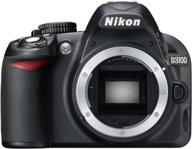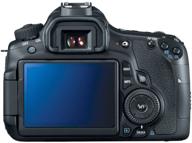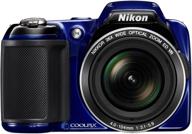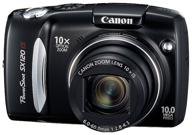
Review on Discontinued Canon EOS 7D Digital SLR 📷 Camera Body Only with 18 MP CMOS Sensor by Jagvir Singh ᠌

Overall good, but I expected more, there are disadvantages.
On the camera's casing is written a single-digit number: 7D. As a result of this, the owner is filled with euphoria and refuses to acknowledge that the camera, given its characteristics, ought to be placed in the category of amateur equipment. Let's take a look at what makes it so fundamentally helpful for pros and what makes it so rare for amateurs to have access to in comparison to, say, the Canon 50D. Have a quick autofocus? Have you witnessed how he smears things? Video that does not have tracking autofocus and has a poor color depth in the compressed video stream? Given that it has already been incorporated into all of the lines, this is further evidence of an amateurish portion. A few more megapixels? It should come as no surprise that everybody is already worn out from the marketing race of megapixels, which do not add any discernible quality, and the cropped matrix, with all of its noises, makes you want to cry and give a hug. How rapid is the fire? It has previously increased in the 10D-50D line from 3 to 6.3 frames per second; hence, upgrading to 8 frames per second in the context of this is not remarkable in any manner (especially since amateur cameras with a rate of fire of 10 frames per second have long been in vogue, and you will never see 8 fps on a 7D without a raised mirror). 2 processors? Are there any other uses for them except figuring out how to make the rate of firing higher? I have a sneaking suspicion that they are to blame for the fact that the camera has such a voracious appetite for batteries. In the video shooting mode, Canon didn't even bother to use any of the CPUs to implement a tracking focusing system. Further features include an external flash control, an electronic level, and others. I concur that controlling the camera's flash from a remote location is a more professional choice (an ordinary amateur will limit himself to one external flash and bright man-made lighting). However, control of an external flash is already included in Canon's amateur line (for example, the Canon 60D), as well as the electronic level. In comparison to the Canon EOS 50D and its offspring, the EOS 60D, what aspects of this camera lend themselves more to the needs of working professionals?
- Extremely convenient controls. Quick autofocus. Rapid fire in bursts of shots. Full HD video. The back and front focus were aligned using software. Flashes attached to the camera can be controlled remotely. A viewfinder that is reasonably bright and informative. Three highly customizable user modes quickly switched by mode dial. a housing made of metal that is impervious to dust and moisture.
- In terms of noise, the matrix has a marginally lower level than the 50D, but the difference is not particularly evident (the noise pattern is slightly different). The battery, despite its large capacity, was depleted in a short amount of time. The autofocus is quick, yet, to be honest, it blurs (more smears than 50D). There is no tracking autofocus available when recording video (even contrast).
New products
Comments (0)
Top products in 📷 Digital Cameras

Nikon D3100 DSLR Camera Body (Kit Box) - No Lens Included, International Version with No Warranty

298 Review

Canon EOS 60D: 18MP CMOS Digital SLR Camera Body - Your Next Photography Companion

125 Review

Nikon COOLPIX L810 Digital Camera: 16.1MP, 26x Zoom, NIKKOR ED Glass Lens, 3-inch LCD (Blue)

95 Review

Camera Canon PowerShot SX120 IS

76 Review






